#lilly daché
Text

Loretta Young by John Rawlings, US Vogue, 1940
Loretta Young, one of Hollywood's great beauties, is photographed by Vogue in one of the most beautiful new turbans, Large-As-Life pink tulips are thrust through black satin loops, to nod dreamily over the brow. The turban of cashmere fleece looks sculptured to the head. Lilly Daché. Jewels by Flato
49 notes
·
View notes
Text
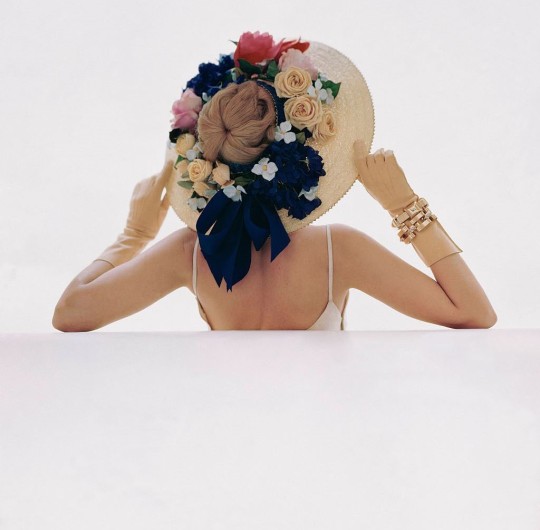
Model wearing hat by Lilly Daché, photographed by John Rawlings for American Vogue, 1946.
#lilly daché#john rawlings#american vogue#vogue us#vogue#1946#fashion photography#fashion photoshoot#fashion#style#1940s
109 notes
·
View notes
Text
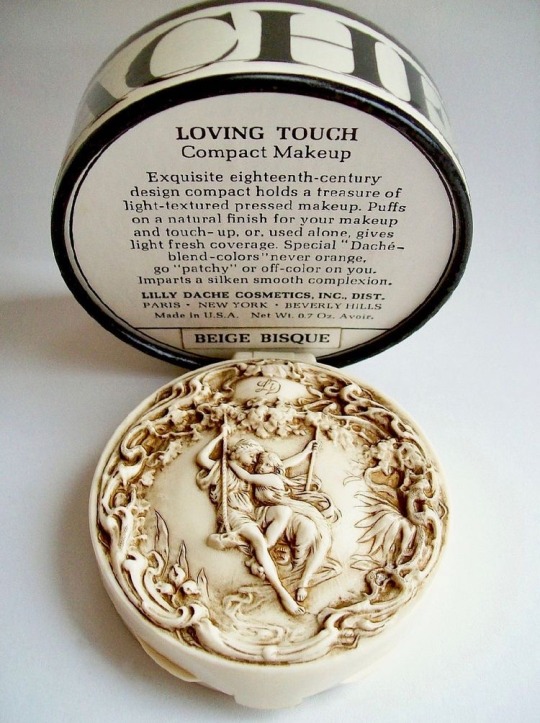

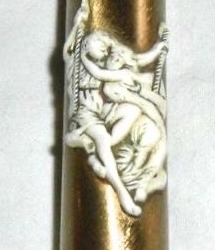



“Loving Touch” line of cosmetics by Lilly Daché, 1950s. Made of carved ivorine.
Modeled after Springtime by Pierre Auguste Cot, 1873.
#ivorine/ivorene is a beautiful name too. i’m happy it gets used#lilly daché#lilly dache#lipstick#pierre auguste cot#art history#swing#cosmetics#art#fave
374 notes
·
View notes
Text

US Vogue April 1, 1953
Evelyn Tripp porte une robe en lin Rodier avec marquages en gros-grain, par Larry Aldrich. Bijoux Schiaparelli en plaqué or. Chapeau, Lilly Daché. Rouge à lèvres Okatea Red" (dans un écrin bijou) de Lucien Lelong.
Evelyn Tripp porte une robe en lin Rodier avec marquages en gros-grain, par Larry Aldrich. Bijoux Schiaparelli en plaqué or. Chapeau, Lilly Daché. Rouge à lèvres lin Okatea Red" (dans un écrin bijou) de Lucien Lelong.
Photo Erwin Blumenfeld
vogue archive
#us vogue#april 1953#fashion 50s#spring/summer#printemps/été#larry aldrich#evelyn tripp#erwin blumenfeld#rodier#lilly daché#schiaparelli#okatea red#lucien lelong#vogue cover#vintage vogue#vintage fashion
22 notes
·
View notes
Text
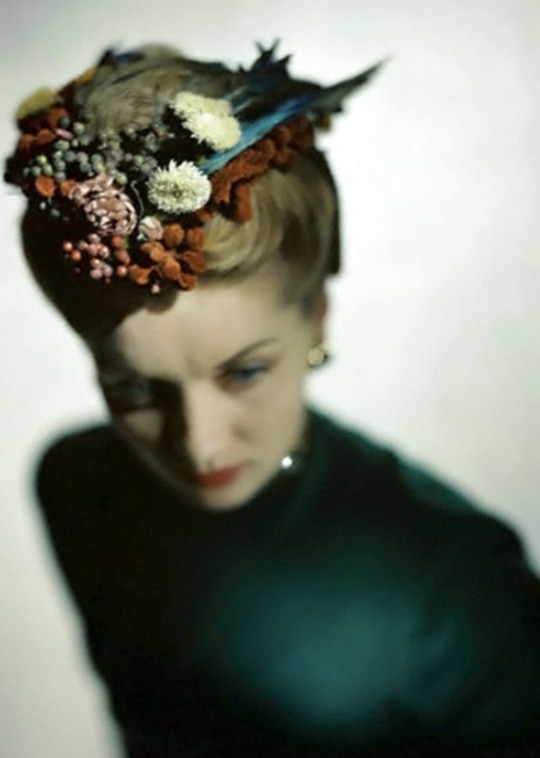
Model wearing Lilly Daché's bonnet-coif of flowers, feathers, and fruit, 1946
1 note
·
View note
Text

1 note
·
View note
Text




Lilly Daché (c. 1892 [?*] – 31 December 1989) was a French-born American milliner and fashion merchandiser.
0 notes
Photo

“La Cigale”
Christian Dior
Fall/Winter 1952/1953
Harper's Bazaar (September 1952) described "La Cigale" as built in "gray moiré, so heavy it looks like a pliant metal," while Vogue (September 1, 1952) called it "a masterpiece of construction and execution." In 1952, what has been called the Dior slouch was placed inside a severe International Style edifice. The devices customarily used to soften surface and silhouette in Dior are eschewed, and the dress becomes the housing of the fashionable posture now required by its apparent weight: the skirt is cantilevered at the hipbone—hip forward, stomach in, shoulders down, and the back long and rounded. Dior employed shaped pattern pieces to mold the bodice to the body and likewise to allow for the dilation at the hips.
American periodicals continued to promote Parisian couture lines after World War II, but they also included American design images and the ready-to-wear lines of Paris in order to make their publications relevant to a wide economic range of American women. "La Cigale" has the underpinnings of couture, but with its standard moiré, long, fitted sleeve, and smooth bodice and skirt cut, a facade of this cocktail piece could easily be adapted for the department store. American designers like Anne Fogarty and Ceil Chapman emulated the "New Look" line for cocktail wear, but used less luxurious fabrics and trims. Dior, along with French contemporary Jacques Fath and milliners Lilly Daché and John Fredericks, quickly saw the advantages of promoting cocktail clothing in the American ready-to-wear market, designing specifically for their more inexpensive lines: Dior New York, Jacques Fath for Joseph Halpert, Dachettes, and John Fredericks Charmers.
The MET (Accession Number: C.I.59.26.3a, b)
Currently on view: In America: An Anthology of Fashion
#evening dress#fashion history#vintage fashion#christian dior#1950s#20th century#1952#1953#fall#winter#grey#cotton#rayon#france#the met
608 notes
·
View notes
Text
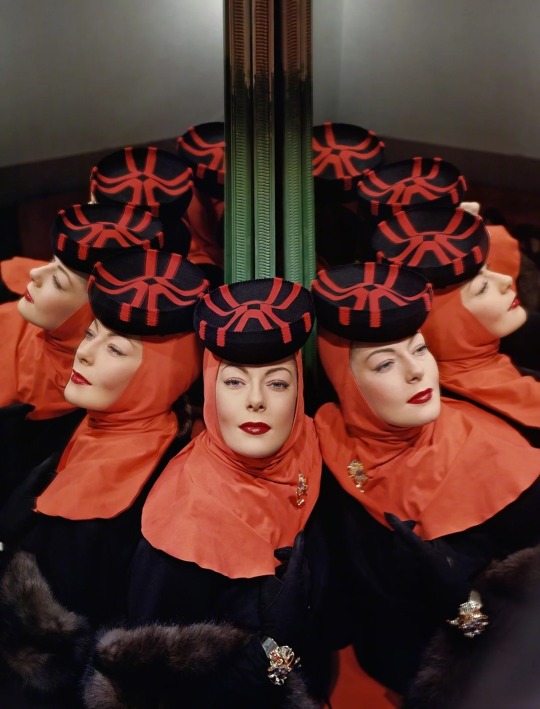
Horst P. Horst
Muriel Maxwell, Hat by Lilly Daché, Jewelry by Trabert & Hoeffer-Mauboussin
1940
#horst p. horst#muriel maxwell#fashion photography#fashion#fashion photoshoot#fashion photographers#french fashion#lilly dache#art on tumblr#aesthetic#beauty#surrealism#modern art#art history#tumblr art#tumblrpic#tumblrpictures#tumblraesthetic#aesthetictumblr#tumblrstyle
27 notes
·
View notes
Text
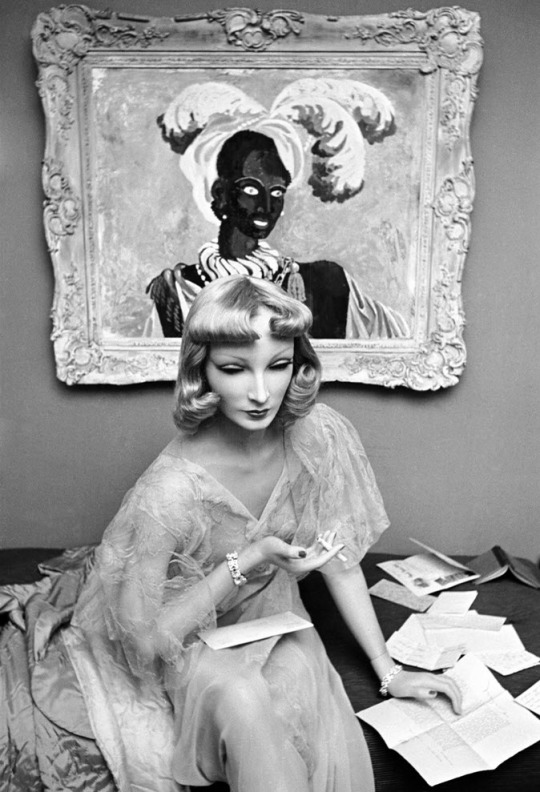
"Cynthia" was a mannequin created in 1932 by Lester Gaba, a sculptor, retail display designer and later a teacher and writer. An unusually natural and human looking mannequin, Gaba used the attention Cynthia garnered to further anthropomorphize her. As a result, Gaba and Cynthia became famous, with Gaba becoming known for his mannequins, and with Cynthia appearing on a cover of Life Magazine, and being invited to the wedding of the former Edward VIII and Wallis Simpson in 1937.[1] Gaba's development of lighter weight mannequins, with more natural, human features, along with Cynthia's popularity impacted the use of mannequins in retail sales marketing.

In 1932, artist Lester Gaba created Cynthia for Saks Fifth Avenue, a 100-pound (45 kg) plaster model who, unusually, had realistic human imperfections like freckles, pigeon toes, and even different sized feet. Gaba posed with Cynthia around New York City for a Life Magazine shoot, and Cynthia appeared on the cover of the magazine, humorously demonstrating how life-like mannequins had become. Gaba further anthropomorphized Cynthia, and she began to receive invitations, fan mail and gifts, and to attend events. Gaba insisted that Cynthia had laryngitis, to account for her lack of speech during personal appearances. Additionally, a whole host of "Gaba Girls" were to follow. The Gaba Girls were life-sized, carved-soap mannequins modeled after well-known New York debutantes for the windows of Best & Company. They were much lighter, at 30 pounds (14 kg), than the typical 200-pound (91 kg) New York store mannequin. With the Gaba Girls and their realistic successors’ appeal, mannequins became an important new tool used by sellers to attract their clientele.
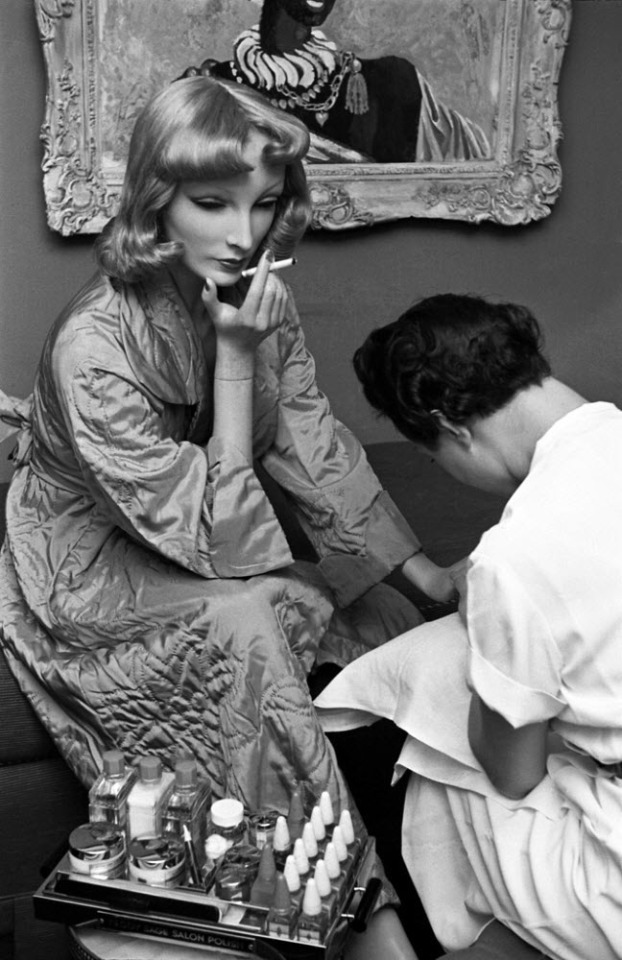
Cynthia herself soon became dazzlingly famous. Cartier and Tiffany sent her jewelry, Lilly Daché designed hats for her, and couturiers sent her their latest fashions, furrieries sent minks. Cynthia began to receive large quantities of fan mail, was photographed by Alfred Eisenstaedt. She was given a credit card from Saks Fifth Avenue, and had a box seat subscription to the Metropolitan Opera House. She had her own newspaper column, and a successful radio show. In 1938, she went to Hollywood to appear in the movie Artists and Models Abroad. In 1939, she was back in New York to see the notorious play Madame Bovary at the Broadhurst Theater. Cynthia met her demise when she slipped from a chair in a beauty salon and shattered.[1] The press reported her death, and Gaba appeared distraught, but eventually reconstructed her. In December 1942, however, Gaba was inducted into the army. Cynthia retired, and it wasn't until 1953 that she came back to the public in a TV show. But the magic was over, and Cynthia was soon to be stored in a cupboard for good.

#mannequin#cynthia#art#1930s aesthetic#1930s film#1960s fashion#1960#1930#cinema#cinemetography#fashion#chic#curiosité#vintage#lana del rey#lizzy grant#red velvet#1950s vintage#1950s style#cigarrete#cigarettes#vintage art#marylin monroe#hollywood#old hollywod glamour#old hollywood#sculpture#old fashion#vintage beauty#blog
32 notes
·
View notes
Photo

Lilly Daché
Vogue, November 15, 1964
Photographed by Horst P. Horst
#Vogue#Horst P. Horst#60s Vogue#1960s Vogue#vintage Vogue#vintage fashion#vintage style#vintage fashion photography#60s fashion#60s style#60s fashion photography#1960s fashion#1960s style#1960s fashion photography
23 notes
·
View notes
Text

US Vogue December 1951
A model wearing a beret made of moonstones, at least a thousand of them, each casting its own light on the face. By Lilly Daché. Diamond earrings, diamond and sapphire clip (clipped on a jacket by Charles James), by Van Cleef & Arpels.
To add to all the shine: the “Cornaline” lipstick, the “Sapphire” eyeshadow and the “Ermine Fond de Teint Lotion”, all by Gourielli.
Un modèle coiffé d'un béret composé de pierres de lune, au moins un millier, chacune projetant sa propre lumière sur le visage. Par Lilly Daché. Boucles d'oreilles en diamants, clip diamants et saphirs (clipsé sur une veste par Charles James), de Van Cleef & Arpels.
Pour ajouter à tout l'éclat : le rouge à lèvres « Cornaline », le fard à paupières « Saphir » et la « Lotion Fond de Teint Ermine », tous signés Gourielli.
Photo Erwin Blumenfeld
vogue archive
#us vogue#december 1951#fashion 50s#beauty 50s#1950-51#lilly daché#van cleef & arpels#charles james#gourielli#vogue cover#couverture de vogue#erwin blumenfeld
37 notes
·
View notes
Photo

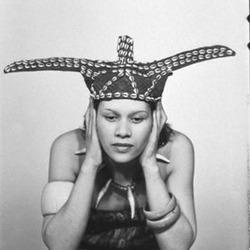
Congolese Headdresses, Lily Dache and the Metropolitan Museum of Art
Click below to read a fascinating article by Wendy A. Grossman about the global travels of head gear and ideas.
It begins, “In 1974, The Metropolitan Museum of Art’s Costume Institute received a unique bequest of forty-seven prestige caps and headdresses from Central Africa’s Congo River basin. This gift came from Lilly Daché, the French-American milliner whose inventive designs dominated the American and French fashion scene from the 1930s through the 1950s.”
And Grossman goes on to explain the conversation at the time over the influence of Congolese style on fashion and art. It was not always a pleasant conversation as you will read because of racist ideas about which cultures were civilized and which were not.
https://www.metmuseum.org/perspectives/articles/2022/9/mode-au-congo
#lilydache#millinery#vintagemillinery#congoleseheaddress#wendyagrossman#metropolitanmuseumofart#fashioninfluences#vintagefashion#fashionhistory#dress history#costumehistory#congo#surrealism
5 notes
·
View notes
Text
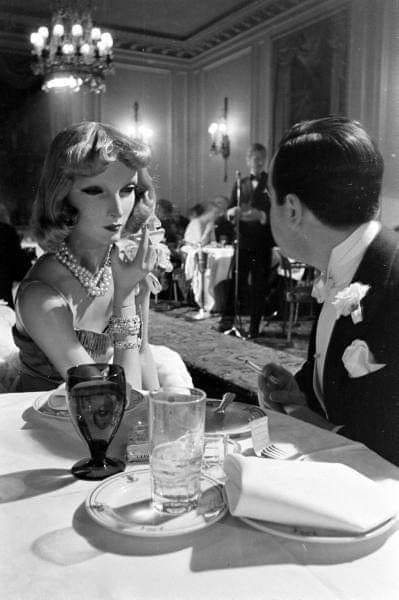
‘In 1932, artist Lester Gaba created a mannequin known as Cynthia for Saks Fifth Avenue. Cynthia had realistic imperfections like freckles, pigeon toes, and even different sized feet.
Cartier and Tiffany sent her jewelry, Lilly Daché designed hats for her, and couturiers sent her their latest fashions, furrieries sent minks. She was given a credit card from Saks Fifth Avenue, a box seat subscription to the Metropolitan Opera House and made the cover of Life Magazine.
3 notes
·
View notes
Photo

I don't esp want to read and review Amazing Stories April 1956 but I sure am curious about the science article, 2001 as imagined by Sid Caesar, Leo Cherne, Lilly Daché, Hubert J. Schlafly, John Cameron Swayze, General Carlos Romulo, Oliver J. Dragon, Herb Score, Oliver Read, William Steig, A. W. Zelomek, Philip Wylie, Dr. N. Gonzalez, Salvador Dali, Steve Allen, and Robert Lindner.
2 notes
·
View notes
